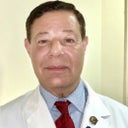I have a small, persistent raised area on my cheek (approx. 8mm x 6mm) that appeared after an acne lesion. It’s skin-coloured, doesn’t feel hard or painful, and hasn’t changed much over time. It feels like normal skin but looks slightly elevated, thicker than the skin around it, and doesn’t fold in the same way the opposite side does. The dermatologists I’ve seen say it’s probably a result of overhealing—fibrosis, mild hypertrophic scarring, or some kind of residual skin thickening, but they can’t confirm without an ultrasound (which I’m working on getting). Thoughts on what it is, and if microneedling could be an effective treatment? If so, what depth? I’m a male, late 30s. Thank you!
Answers (2)
From board-certified doctors and trusted medical professionals
Dr. Anna Chacon, MD, FAAD

Dr. Anna Chacon, MD, FAAD
Board Certified Dermatologist
Answer
Dr. Nelson Lee Novick, MD

Dr. Nelson Lee Novick, MD
Dermatologic Surgeon, Board Certified in Dermatology
Answer
More Microneedling Questions
See all Microneedling Q&AWE SEND PRETTY
EMAILS
What’s trending? Who’s turning heads? Which TikTok myths need busting? We’ve got you. No fluff, no gatekeeping—just real talk. Get our free, unfiltered newsletter.